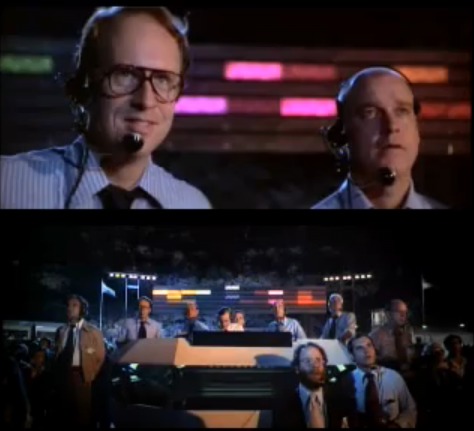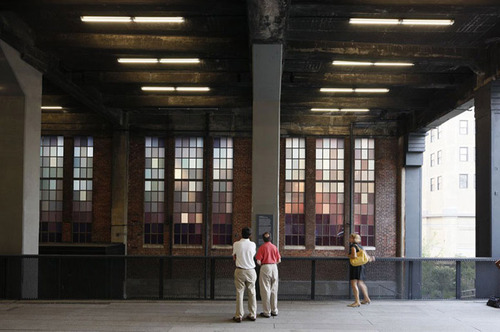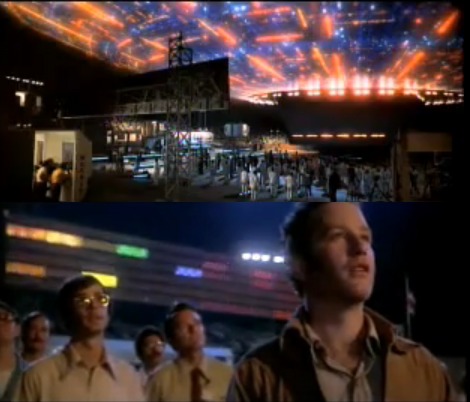I'm sure the original's long gone, but I want the Moog synthesizer-equipped lightboard from Close Encounters of the Third Kind.

The idea of communicating with extraterrestrials via "a basic tonal vocabulary" synched to a gridded light show is like the lovechild of Carl Sagan and Ellsworth Kelly, conceived at an outdoor Pink Floyd concert. In a good way.

Sculpture for a Large Wall, 1957, image: moma.org
[Just an aside, the story of Kelly's Sculpture for a Large Wall is utterly fantastic. I'm glad that it's safe and at MoMA, but the utter failure of Philadelphia to keep it should be discussed every time the Eakins or Barnes stories are told.]

Spencer Finch, The River That Flows Both Ways, image by iwan bann via thehighline
I would have expected Spencer Finch or Leo Villareal to have made one of these already. Or any one of a number of early Silicon Valley IPO nerds. But I can't find any record of replicas anywhere. So I will step in where I must.

My first guess was that Douglas Trumbull gets the credit for the board; and maybe he designed and executed it. But according to Ray Morton's definitive-sounding 2007 book on the making of Close Encounters, it was Spielberg's idea to have a colored lights that correspond to each Moog tone. John Williams composed and recorded the music in advance, so it could be played back on set for filming what was called "the jam session." I'll gladly overlook this somewhat Milli Vanillistic approach to jamming in exchange for the score and the rig's schematics.

Rirkrit Tiravanija, Untitled (Rehearsal Studio No. 6, Silent Version), 1996, installed at MCA Chicago, image via artforum
Because obviously, when you exhibit this, you'll expect the first thing everyone will play is that iconic five-note greeting. Then they'll get into a jam session of their own. You'd probably want to make it possible, via the web or USB stick or something, for people to execute their own compositions, to let the computer "take over the conversation" once in a while. And you'd probably stream the piece over the web, too, give it its own channel. Maybe schedule some performers to come in and use it.
Then for good measure, put the whole thing on a golden CD and launch it into space, and wait for a response.












